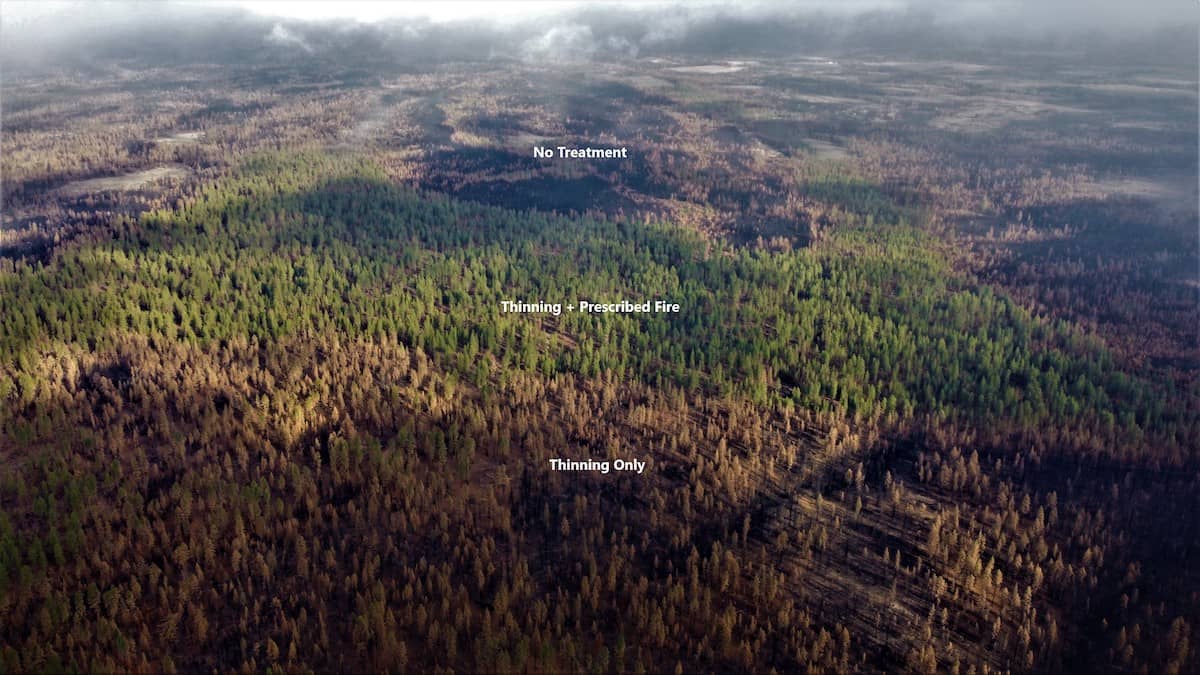With the threat of wildfire becoming a year-round reality especially in the western U.S., when can fire be good? And how can good fires help prevent bad ones? Prescribed burns, or controlled burns, are techniques used by natural resource professionals to fortify our ecosystems, but they don’t have to be shrouded in mystery. Here’s a quick FAQ to help you separate fact from fiction:
What is a controlled burn?
Simply put, a controlled burn is a planned low-intensity fire that is often used to prevent uncontrolled wildfires from overwhelming a forest landscape by removing hazardous fuels such as low growing vegetation. This allows experts on the ground to manage fires on a given landscape based on smoke, vegetation, species habitat, location and intensity needed, and is used as a management tool to stimulate the natural regeneration of a forest and prevent high-intensity, high-heat fires that can devastate landscapes and damage seed beds. Controlled or prescribed burns are also referred to as hazard reduction burning, swailing or burn-off.
Do controlled burns ever go wrong?
The U.S. Forest Service estimates that 4,000-5,000 prescribed burns are completed annually by federal land management agencies, and the agency states that over 99% of those are successful, meaning they remain contained within the predetermined area. (Independent analysis by the Wildland Fire Lessons Learned Center and Oklahoma State Extension Service in recent years tabulated 99% and 97-99% success rates, respectively.) Experts remain on site to ensure all flames are extinguished post-burn and later assess the efficacy of the burn. In extremely rare circumstances, conditions can change, and the prescribed fire can move outside of the planned project area, resulting in an ‘escape’ or ‘near miss’. Any damage caused by an escape or near miss requires a complete investigation, often resulting in a change of practices to ensure it doesn’t happen again.
Why continue to use controlled burns?
Controlled burns have been utilized on North American forests for millenia and are essential tools for forest health, especially in western forests. We cannot afford to move away from the proactive use of fire. The window of time for conducting prescribed fire is small, as these burns must be planned and executed when conditions are right and when the capacity of trained, experienced staff allows. If controlled burns are not used to treat the landscape, when a wildfire does occur, there will be too much tinder-ready fuel available, increasing the likelihood of a far more catastrophic wildfire.
Can’t we just use thinning instead of controlled burns?
Forest thinning can facilitate future fire suppression, but the efficacy of thinning and controlled burns in supporting forest health is maximized when applied together. Our landscapes need this combined treatment, especially in the West, and thinning alone generally is insufficient to effectively manage wildfires for ecological benefits (e.g. improved wildlife habitat and soil quality, competition from other tree species, pest control), and to help prepare them for future suppression efforts.

Photo Credit: Klamath Tribes Natural Resources Department
What’s the future of controlled burns?The U.S. Forest Service published a 10-year Wildfire Crisis Strategy in January 2022 that commits to aggressive, science-driven steps to reduce catastrophic wildfires in the face of climate change. This strategy builds on the wildfire risk reduction and forest restoration funding included in the Infrastructure Investment and Jobs Act from November 2021, equipping the U.S. Forest Service to get experts and tools where they’re needed most. As part of the 10-year strategy, the agency is planning to scale up prescribed fire over the coming years. Given the increasing threats of climate change, controlled burning offers a safe, effective and necessary tool that utilizes extensive planning, monitoring and interagency efforts to strengthen the health of our forests and our communities. Like thinning, wider use of this tool will require the workforce for its application to grow substantially.